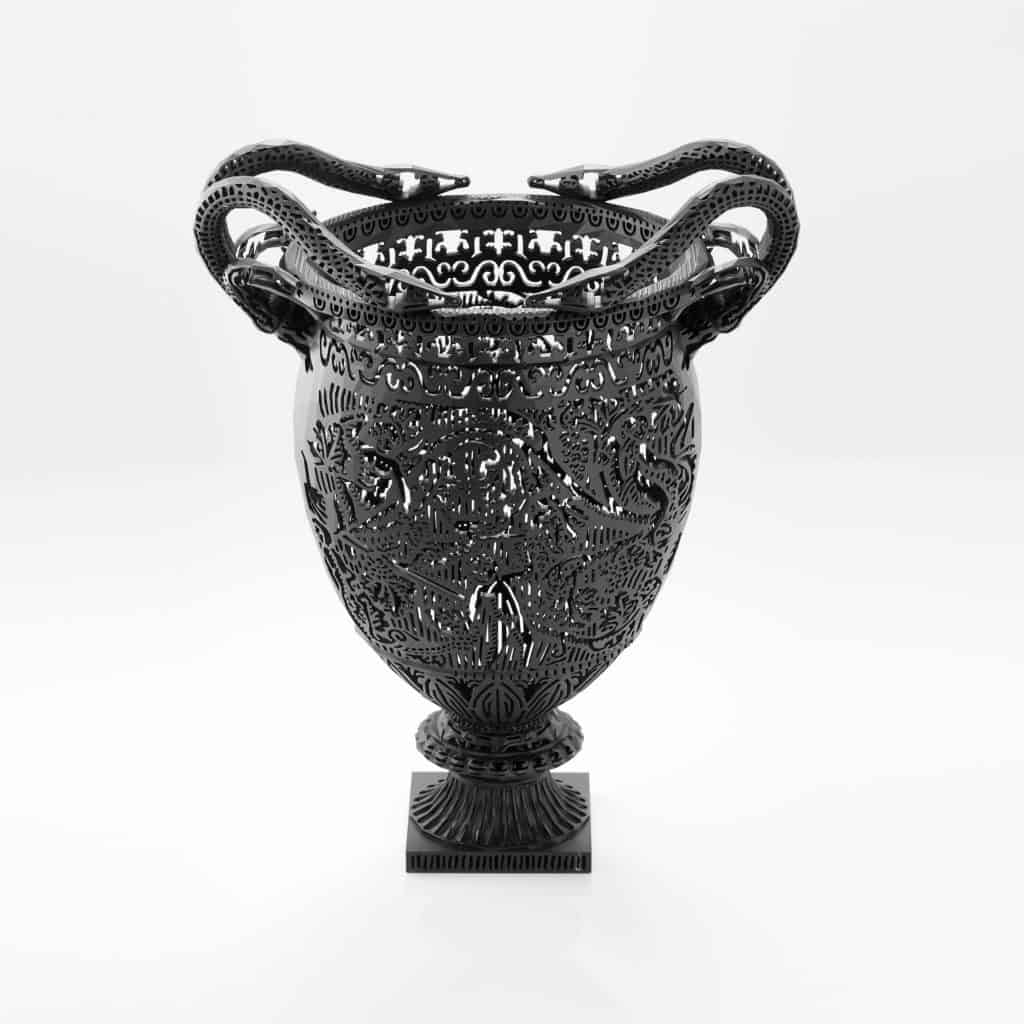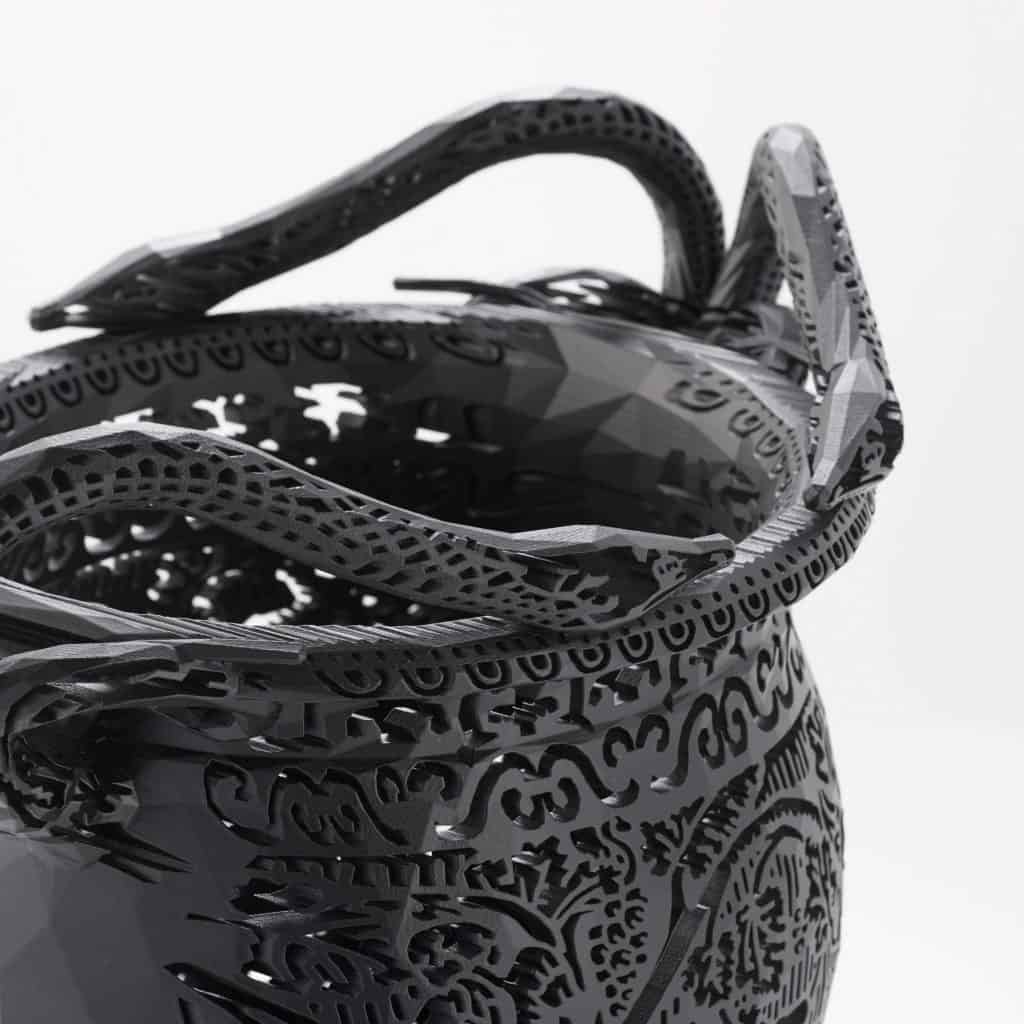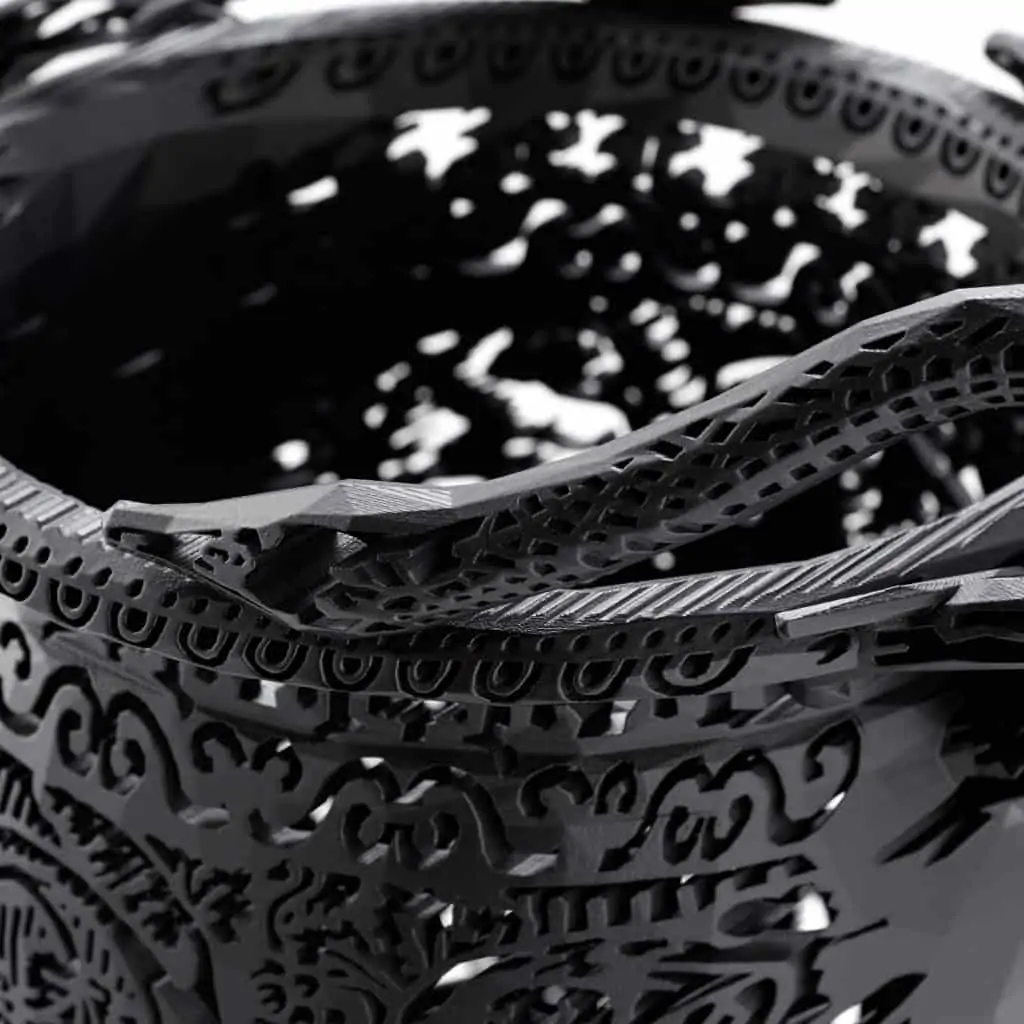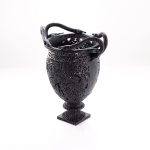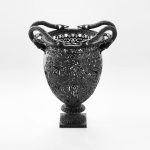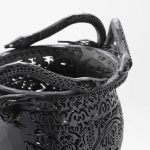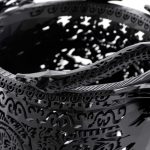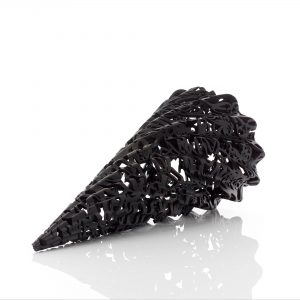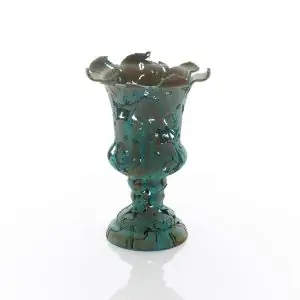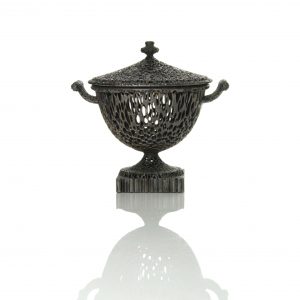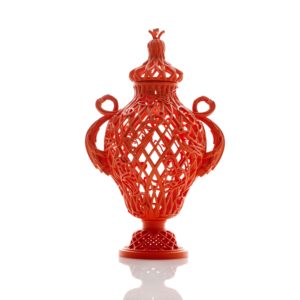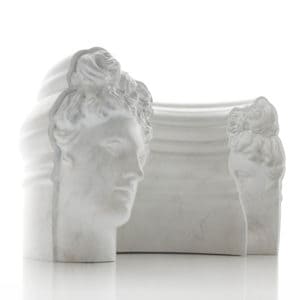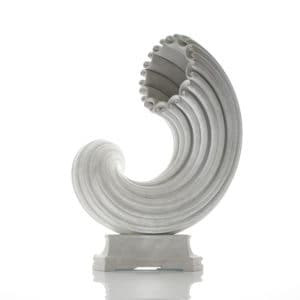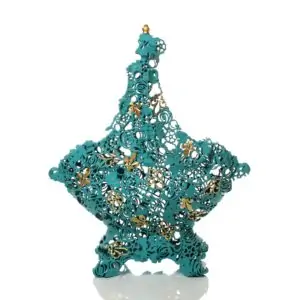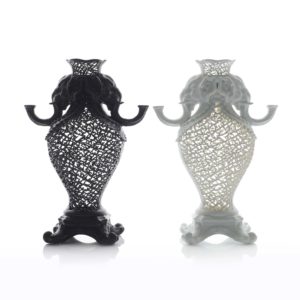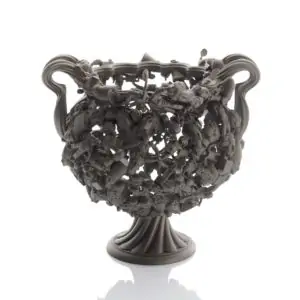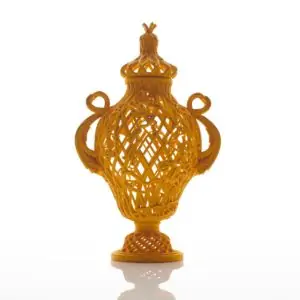More about Innovo Vase, 2016
The Stowe Vase Project – an interpretation by Michael Eden
'As an artist, being presented with a new project is always an exciting challenge. It is an opportunity to explore unfamiliar territory and engage with new ideas. The reinterpretation of the Stowe Vase presented just such an opportunity, and quite a daunting one. My first impression, on seeing an image of the Vase was to marvel at its rich and highly ornate relief carving and then to begin to wonder where I would make a start to the project.
Over the past few years I have become interested in how we increasingly engage with the actual, physical world through the screens of our devices and though the technology has made vast amounts of information available to us at our fingertips, a virtual experience is most definitely not the same as an actual one. There is a loss of sensory information, a loss of detail, colour is often inaccurate and images are often ‘enhanced’. To address this, I have created pieces such as the Voxel Vessel, based on low resolution images taken from the Google Art Project virtual tour of the Chateau de Fontainebleau, where pixels are translated into 3 dimensional voxels. In essence, pieces such as this explore visual perception and the relationship between 2D and 3D.
Rosie Mills, the LACMA Rosalinde and Arthur Gilbert Foundation Associate Curator of Decorative Arts and Design initially provided me with some images and
historic information relating to the Stowe Vase, which proved a useful starting point for my research. I was intrigued by the story and soon found (according to Wikiwand) that 'Works of art sold in 1848 ... include ... two marble vases bought as Ancient Roman but actually the work of Giovanni Battista Piranesi, one of these is now in the Los Angeles County Museum of Art.' This was reported to Rosie, who replied with further information that detailed how the vase and another similar one were excavated by the Scots artist, antiquarian and art dealer, Gavin Hamilton from Hadrian’s Villa in Tivoli in 1769. So the mystery deepened. According to an article(*) in the Los Angeles County Museum Bulletin of the Art Division, it was thought that the vase had been ‘considerably restored, quite conceivably by Piranesi who, as he tells us, played a part in its acquisition; missing areas under the rim and handles, however, have only been patched with plaster’.
It seems likely that the Stowe Vase may have been treated in almost the same way as his best known work as a 'restorer' of ancient sculpture, the Piranesi Vase. This piece was made up from a large number of fragments also excavated from Hadrian’s Villa in Tivoli.
By now I was interested in Piranesi and spent a little time looking at his etchings, which led me to a project where Factum Arte had made a collection of objects from Piranesi designs. A mixture of new technology and traditional craft processes were used in their manufacture, the results being accurate realisations of the drawings. Though their results are technically very impressive, it wasn’t the method I wished to use. My focus was on a personal interpretation, rather than to attempt an accurate reproduction of the vase.
With a choice of two starting points- the photos and the etchings, it was the latter that appealed the most. To a certain extent, Piranesi had created his own representation of the vase, ‘repairing’ the damage and ‘restoring’ some of the detail. The etchings are essentially a fiction, as the vase may also be.

The etchings also appealed because, as prints they connect with my chosen method of production – 3D printing. The 3D CAD software that I utilize is essentially a very large toolbox that allows users to create objects by employing a variety or sequence of tools. Even though I have spent a great deal of time over the past 10 years using it, I still enjoy the challenge of making it serve me, rather than allowing it to lead the way and determine the outcome. So I constantly have to experiment to achieve the forms that I have in mind. It can be very time-consuming, yet totally captivating.
The starting point for all my work is the sketchbook where I make notes, bring together images and then start to sketch. I soon move over to the CAD software as it is an ideal medium for developing and realising an idea through a series of iterations. I particularly enjoyed the highly detailed engraved lines that give the image its 3-dimensional quality and it was this element that I decided to translate from 2D to 3D.
The initial stage was to create a simplified, virtual 3D version of the vase, that would form the basic shape.

Then came the technical challenge of reproducing the same quality of line in a way that could be printed within the constraints of the 3D printer. Initially, I experimented with tracing and then with Photoshop to simplify the image, but to no avail and in the end I had to completely re-draw the image.

Once I had completed a section, the image was then ‘extruded’ from 2D to virtual 3D and dimensions were checked to ensure their ‘printability’. After numerous hours of intense work, the image was completed and I was able to extrude it, section by section.The next stage was to trim the extrusions using the vase form that I had initially created as the cutting tool.

Once a section was completed, I needed to check each individual part to ensure that it was within the capabilities of the printer. If not I had to re-draw some of the details, create a new extrusion and go through the process yet again. Every single part had to be checked in this way, an extremely time-consuming and focused effort. When I was eventually satisfied with the design, I sent the data to the 3D print bureau for their diagnosis and opinion.

My relationship with the technicians at the bureau is essential and is founded on their understanding of what I am attempting to create and my understanding of the processes involved in its creation. With an artwork as complex as this piece, there were inevitably some technical issues to resolved, so the CAD drawing was bounced backwards and forwards after each of my tweaks and revisions.
And then, finally after about 6 weeks of intense work on the computer the drawing was ready to be transformed from a virtual to a physical object. The period of waiting
between giving the go-ahead and receiving the piece is always a nerve-wracking time, is it going to work, will there be any structural issues, and what will it really look like? It’s one thing to have explored the piece in the minutest of detail on screen, but seeing the actual object for the first time is always a revelation. There is so much more to it than can ever be ascertained from CAD drawings or renderings.
The very last task was for me to give the piece a name, something I was putting off until I had seen the finished vase. The decoration of the Stowe Vase, incorporating snakes, vines, grapes and ivy, all suggest that the story Bacchus was the inspiration. He is associated with dying and re-birth, which seems appropriate to the history of the vase, having been lost, broken and then discovered and repaired. The silver Storr Vase could be seen as another kind of re-birth, where the story of the vase is extended from its origins through the time of Piranesi to the Regency period of Paul Storr. And now, this latest version revives and brings the story into the C21st.
So perhaps it should be called the Innovo Vase, which translates from the Latin as renew, innovate, start again, return.'
- Michael Eden, 2016
* Feinblatt, Ebria. Los Angeles County Museum, Bulletin of the Art Division, Vol. 7 No.4, Fall 1955. p.5

 The etchings also appealed because, as prints they connect with my chosen method of production – 3D printing. The 3D CAD software that I utilize is essentially a very large toolbox that allows users to create objects by employing a variety or sequence of tools. Even though I have spent a great deal of time over the past 10 years using it, I still enjoy the challenge of making it serve me, rather than allowing it to lead the way and determine the outcome. So I constantly have to experiment to achieve the forms that I have in mind. It can be very time-consuming, yet totally captivating.
The starting point for all my work is the sketchbook where I make notes, bring together images and then start to sketch. I soon move over to the CAD software as it is an ideal medium for developing and realising an idea through a series of iterations. I particularly enjoyed the highly detailed engraved lines that give the image its 3-dimensional quality and it was this element that I decided to translate from 2D to 3D.
The initial stage was to create a simplified, virtual 3D version of the vase, that would form the basic shape.
The etchings also appealed because, as prints they connect with my chosen method of production – 3D printing. The 3D CAD software that I utilize is essentially a very large toolbox that allows users to create objects by employing a variety or sequence of tools. Even though I have spent a great deal of time over the past 10 years using it, I still enjoy the challenge of making it serve me, rather than allowing it to lead the way and determine the outcome. So I constantly have to experiment to achieve the forms that I have in mind. It can be very time-consuming, yet totally captivating.
The starting point for all my work is the sketchbook where I make notes, bring together images and then start to sketch. I soon move over to the CAD software as it is an ideal medium for developing and realising an idea through a series of iterations. I particularly enjoyed the highly detailed engraved lines that give the image its 3-dimensional quality and it was this element that I decided to translate from 2D to 3D.
The initial stage was to create a simplified, virtual 3D version of the vase, that would form the basic shape.
 Then came the technical challenge of reproducing the same quality of line in a way that could be printed within the constraints of the 3D printer. Initially, I experimented with tracing and then with Photoshop to simplify the image, but to no avail and in the end I had to completely re-draw the image.
Then came the technical challenge of reproducing the same quality of line in a way that could be printed within the constraints of the 3D printer. Initially, I experimented with tracing and then with Photoshop to simplify the image, but to no avail and in the end I had to completely re-draw the image.
 Once I had completed a section, the image was then ‘extruded’ from 2D to virtual 3D and dimensions were checked to ensure their ‘printability’. After numerous hours of intense work, the image was completed and I was able to extrude it, section by section.The next stage was to trim the extrusions using the vase form that I had initially created as the cutting tool.
Once I had completed a section, the image was then ‘extruded’ from 2D to virtual 3D and dimensions were checked to ensure their ‘printability’. After numerous hours of intense work, the image was completed and I was able to extrude it, section by section.The next stage was to trim the extrusions using the vase form that I had initially created as the cutting tool.
 Once a section was completed, I needed to check each individual part to ensure that it was within the capabilities of the printer. If not I had to re-draw some of the details, create a new extrusion and go through the process yet again. Every single part had to be checked in this way, an extremely time-consuming and focused effort. When I was eventually satisfied with the design, I sent the data to the 3D print bureau for their diagnosis and opinion.
Once a section was completed, I needed to check each individual part to ensure that it was within the capabilities of the printer. If not I had to re-draw some of the details, create a new extrusion and go through the process yet again. Every single part had to be checked in this way, an extremely time-consuming and focused effort. When I was eventually satisfied with the design, I sent the data to the 3D print bureau for their diagnosis and opinion.
 My relationship with the technicians at the bureau is essential and is founded on their understanding of what I am attempting to create and my understanding of the processes involved in its creation. With an artwork as complex as this piece, there were inevitably some technical issues to resolved, so the CAD drawing was bounced backwards and forwards after each of my tweaks and revisions.
And then, finally after about 6 weeks of intense work on the computer the drawing was ready to be transformed from a virtual to a physical object. The period of waiting
between giving the go-ahead and receiving the piece is always a nerve-wracking time, is it going to work, will there be any structural issues, and what will it really look like? It’s one thing to have explored the piece in the minutest of detail on screen, but seeing the actual object for the first time is always a revelation. There is so much more to it than can ever be ascertained from CAD drawings or renderings.
The very last task was for me to give the piece a name, something I was putting off until I had seen the finished vase. The decoration of the Stowe Vase, incorporating snakes, vines, grapes and ivy, all suggest that the story Bacchus was the inspiration. He is associated with dying and re-birth, which seems appropriate to the history of the vase, having been lost, broken and then discovered and repaired. The silver Storr Vase could be seen as another kind of re-birth, where the story of the vase is extended from its origins through the time of Piranesi to the Regency period of Paul Storr. And now, this latest version revives and brings the story into the C21st.
So perhaps it should be called the Innovo Vase, which translates from the Latin as renew, innovate, start again, return.'
- Michael Eden, 2016
* Feinblatt, Ebria. Los Angeles County Museum, Bulletin of the Art Division, Vol. 7 No.4, Fall 1955. p.5
My relationship with the technicians at the bureau is essential and is founded on their understanding of what I am attempting to create and my understanding of the processes involved in its creation. With an artwork as complex as this piece, there were inevitably some technical issues to resolved, so the CAD drawing was bounced backwards and forwards after each of my tweaks and revisions.
And then, finally after about 6 weeks of intense work on the computer the drawing was ready to be transformed from a virtual to a physical object. The period of waiting
between giving the go-ahead and receiving the piece is always a nerve-wracking time, is it going to work, will there be any structural issues, and what will it really look like? It’s one thing to have explored the piece in the minutest of detail on screen, but seeing the actual object for the first time is always a revelation. There is so much more to it than can ever be ascertained from CAD drawings or renderings.
The very last task was for me to give the piece a name, something I was putting off until I had seen the finished vase. The decoration of the Stowe Vase, incorporating snakes, vines, grapes and ivy, all suggest that the story Bacchus was the inspiration. He is associated with dying and re-birth, which seems appropriate to the history of the vase, having been lost, broken and then discovered and repaired. The silver Storr Vase could be seen as another kind of re-birth, where the story of the vase is extended from its origins through the time of Piranesi to the Regency period of Paul Storr. And now, this latest version revives and brings the story into the C21st.
So perhaps it should be called the Innovo Vase, which translates from the Latin as renew, innovate, start again, return.'
- Michael Eden, 2016
* Feinblatt, Ebria. Los Angeles County Museum, Bulletin of the Art Division, Vol. 7 No.4, Fall 1955. p.5 
